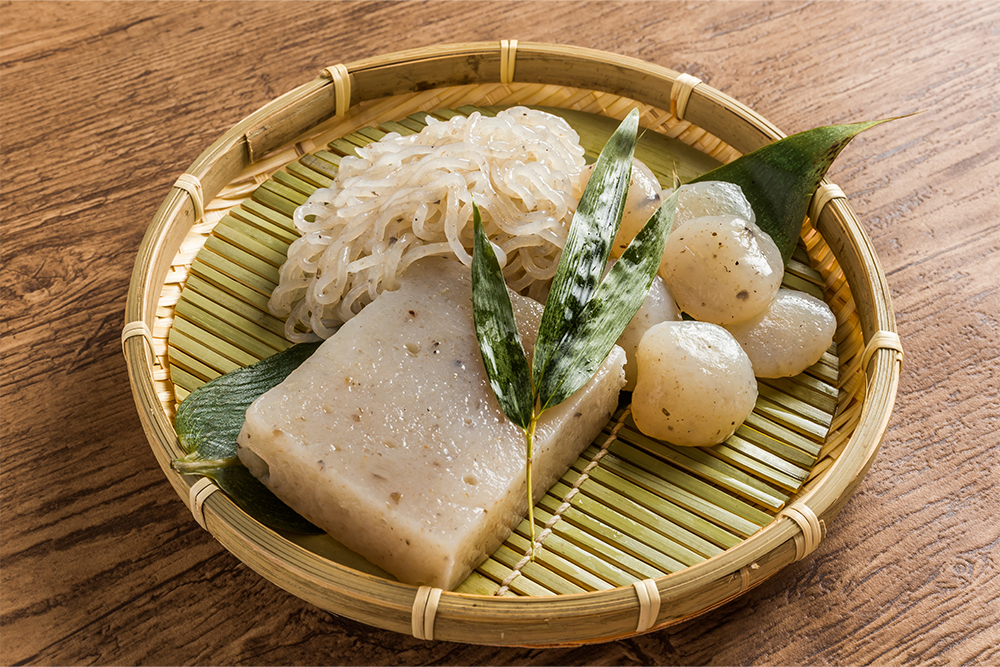In recent years, health foods have become popular, haven’t they? “Contains a variety of vitamins”, “Low fat”, “low calorie”, or etc… There are now many foods that advertise such health promotion. “Konjac” is one of such those foods that has all the characteristics of a health food. It is now popular overseas because it is low in calories and rich in dietary fiber. “Konjac” is made from a kind of taro called “konjac potato”. Most of its components are more than 90% water, and most of the rest are carbohydrates. However, it is said that this carbohydrate component is a polysaccharide called glucomannan (konjac mannan), which is hardly digested and absorbed by the human digestive system. That’s why it’s very low in calories. It is thought to have been brought from the continent. But even in the continent, it was only eaten in some areas of China and Southeast Asia, and was not a major foodstuff. It was introduced to Japan around the 6th century along with Buddhist culture, and apparently it was considered a sort of medicine at that time. Because of its rich in dietary fiber, it was considered to have a beneficial effect on the intestines. After that, there was a lot of studies on how to make it daily-edible, and “Konjac” became a very popular ingredient in so-called “Shojin Cuisine”…
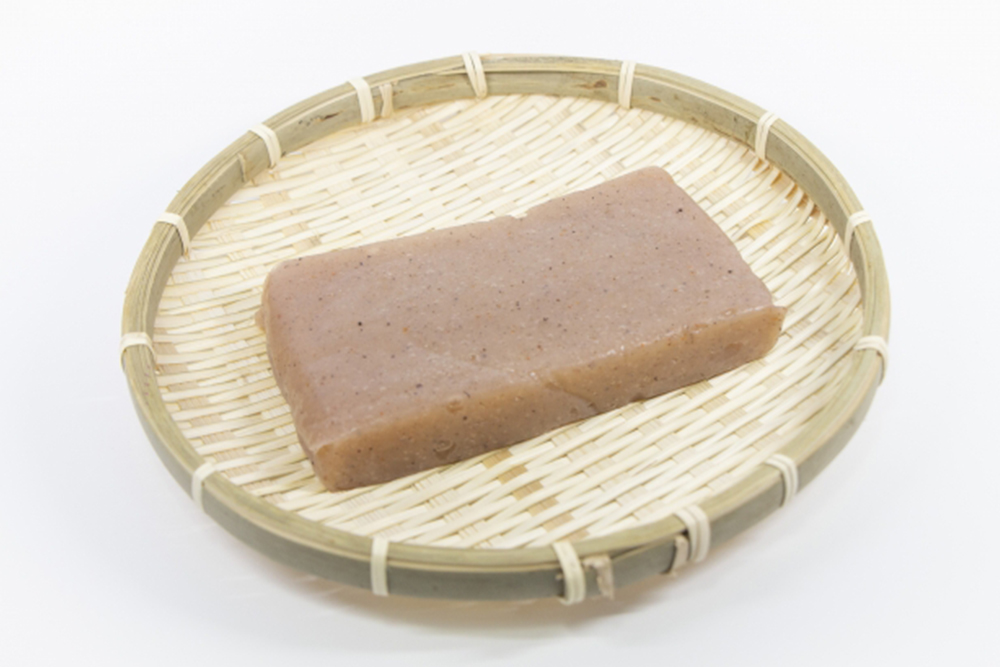
Well, the process of making the “Konjac” that we eat today is quite unique. The ball-stems of “konjac potato” are heat-cooked to form a gel, and then a calcium hydroxide solution is added to solidify it. In the past, ashes were dissolved in water instead of calcium hydroxide solution. “konjac potato” are strictly forbidden to eat raw. Pre-boiling is required. In its raw state, it can cause a turnip if you touch it. Their thought? or will? of trying to eat somehow such a plant is amazing, don’t you think so? As a result of trial and error, our ancestors succeeded in creating the food we know today as “Konjac” by boiling and cooking it with ashes. Although ashes have been used in various fields all over the world since ancient times, it is surprising that such a method was discovered in the field of “food” at a time when the current scientific knowledge had not yet been established. We should be grateful for our ancestors’ spirit of inquiry into food.
As a result of relentless research by our ancestors, there are now many different types of “Konjac”. We would like to introduce some of them to you.

・Ito-Konjac (Thread-like Konjac)
In the Kanto region, it is often called “Shirataki”. “Shirataki” means in Japanese, “White Waterfall”. What a wonderful naming sense! As the name suggests, it is a thread-like konjac. In the past, the Ito-Konjac was made by cutting board-shaped one into strips, but now it is made by extruding it through a narrow hole. In recent years, it has been in increasing demand as a substitute for noodles in noodle dishes. In Europe and the United States, it is sometimes used as a substitute for pasta. Research and development are still underway to bring the texture and flavor closer to them of real noodles.
・Tsubu-Konjac (Grained konjac)
It is a grainy konjac. As you may have guessed, this one was developed as a substitute for rice. It seems that there will be a variety of “konjac” products as health food in the future.
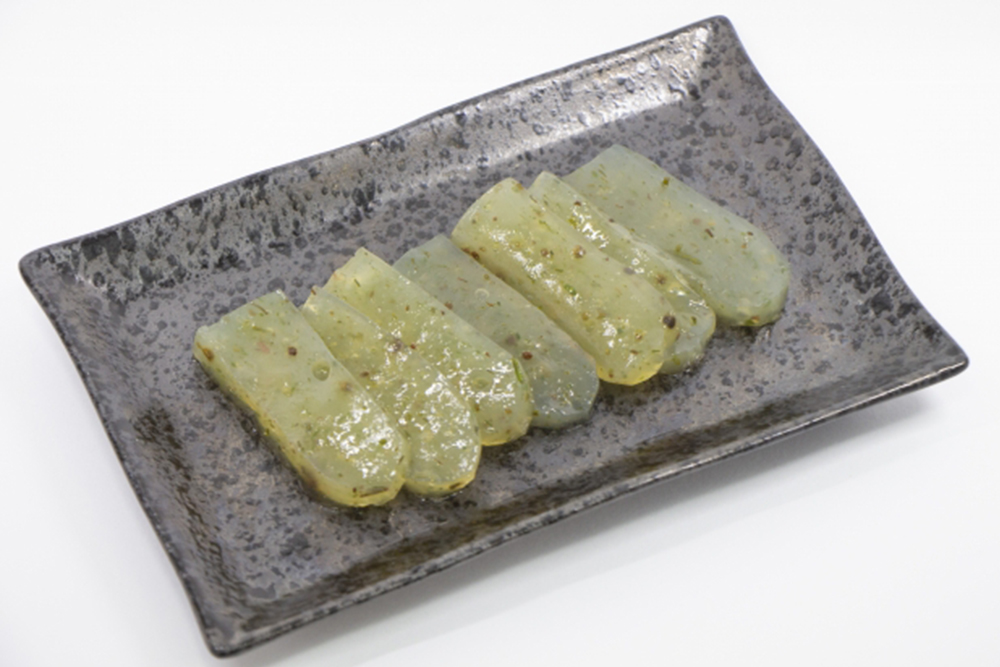
・Sashimi-Konjac
By using konjac flour refined from glucomannan, the main ingredient of “Konjac”, it has very little odor and lye and can be eaten raw. It is also said that in “Shojin cuisine”, “Konjac” was studied as a substitute for meat and fish. Because it was an ingredient that had a distinctive tongue-texture depending on how it was prepared and cooked. It is eaten with soy sauce with condiments or vinegar miso.
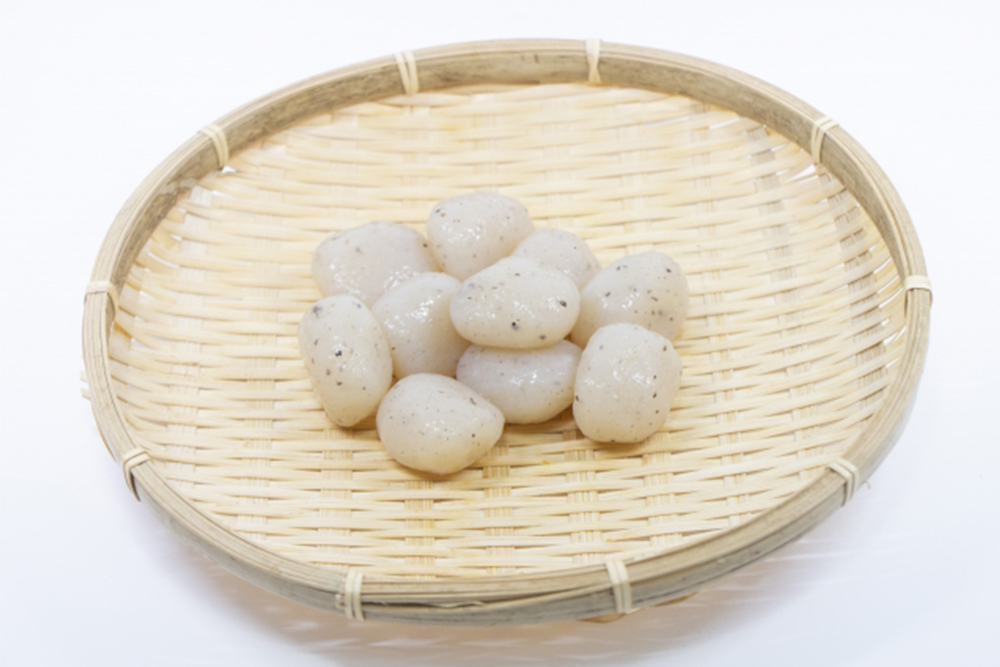
・Tama-Konjac (Ball-like Konjac)
It has been treated as a fast food or a kind of sweets or snacks. It’s a ball-shaped konjac. It is often eaten boiled with a dark seasoning. Some of them are famous as local dishes in Yamagata Prefecture.
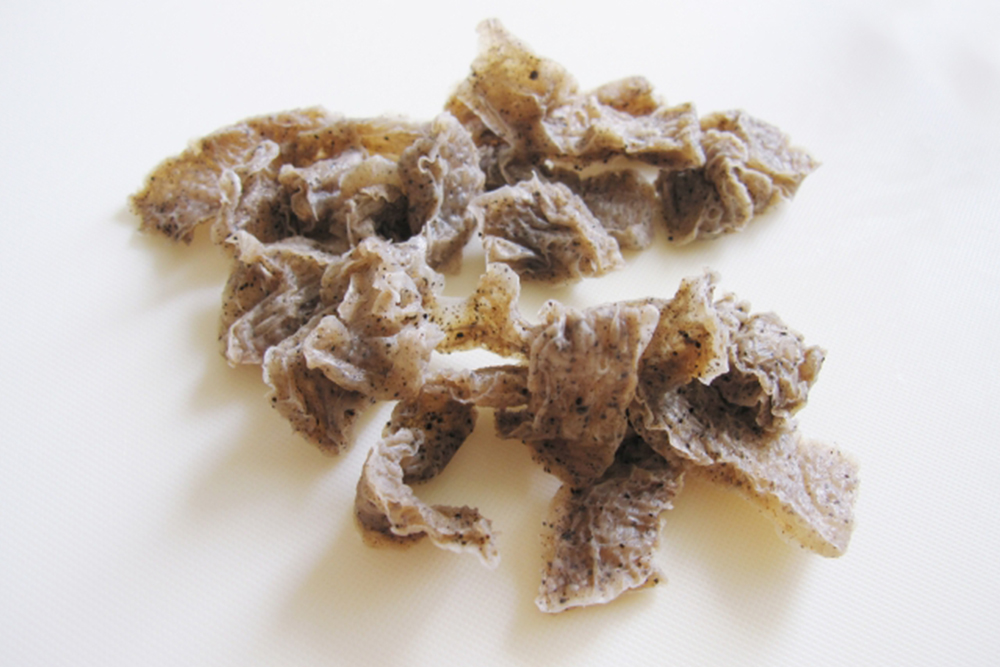
・Shimi-Konjac (Frozen Konjac)
Once konjac is frozen, thawing it will cause the water in it to drain away and the jelly-like texture will be completely lost. This will give it a different and unique tongue-texture. This “Shimi-Konjac” is a product that dares to go through this process. It is used as an ingredient in cooking and also as a facial cleansing sponge.
・Konjac-Jelly
It is a jelly made from “Konjac” instead of gelatin or Kanten-agar. When the product was first introduced to the general market, it was very innovative and became a hot topic. It is still very popular today. It is also recommended for those who have never experienced “Konjac” food before.



